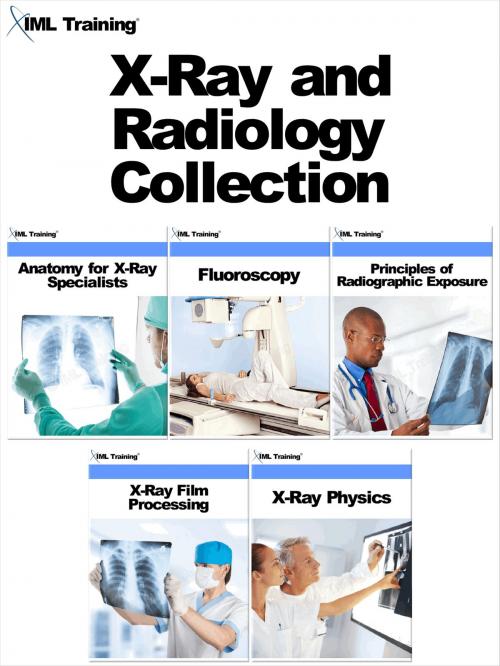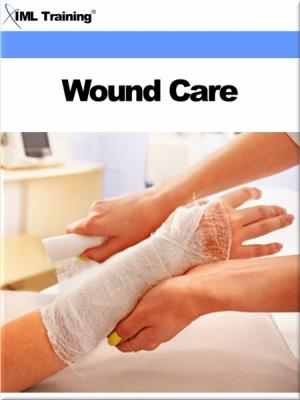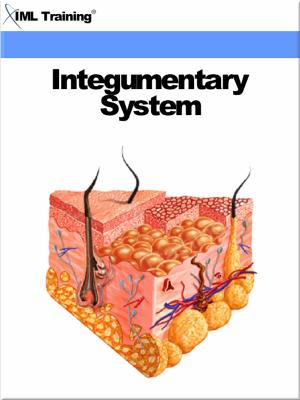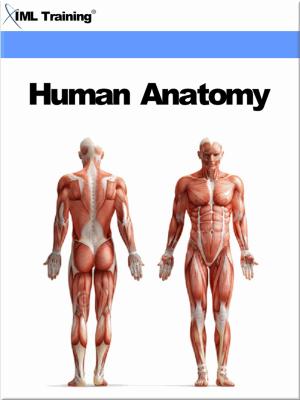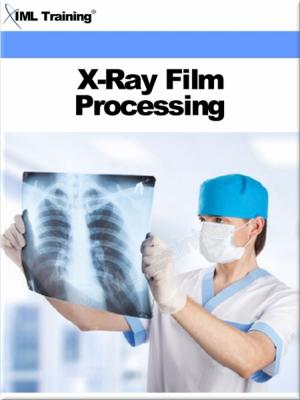X-Ray and Radiology Collection
Includes Anatomy for X-Ray Specialists, Fluoroscopy, Principles of Radiographic Exposure, X-Ray Film Processing, and X-Ray Physics
Nonfiction, Health & Well Being, Medical, Allied Health Services, Radiological & Ultrasound| Author: | ISBN: | 9781782582625 | |
| Publisher: | IML Training | Publication: | August 23, 2013 |
| Imprint: | IML Training | Language: | English |
| Author: | |
| ISBN: | 9781782582625 |
| Publisher: | IML Training |
| Publication: | August 23, 2013 |
| Imprint: | IML Training |
| Language: | English |
X-Ray and Radiology Collection
This collection includes 5 of our training courses all within one book. You can easily use the bookmarks to navigate between each training course. This collection includes:
- Anatomy for X-Ray Specialists
- Fluoroscopy
- Principles of Radiographic Exposure
- X-Ray Film Processing
- X-Ray Physics
Full illustrations and diagrams included.
Anatomy for X-Ray Specialists
As an x-ray specialist (technologist), you need to have a good understanding of human anatomy, especially as it relates to identifying anatomical landmarks, positioning a patient correctly and comfortably, for the making of radiographic exposures. Many structures of the body are radiopaque (impenetrable by x-ray). Others can be made so. These are the structures that are of primary interest, and the area of primary emphasis in this course. Thus, this course is not a broad introductory course in anatomy. Rather, it makes several assumptions, that you, the reader, already have a general basic knowledge of human anatomy and physiology. This course is designed for instruction in anatomy from the special viewpoint of the x-ray specialist.
Fluoroscopy
This course deals with fluoroscopy and with a number of other special techniques and procedures. Some of these are not done often and may require extra study to make up for lack of practice. Whether a procedure is demanding or routine, it is important to remember you are dealing with a person and not just a technique. That person, as well as the doctor, is depending on you to use these techniques in the best way possible to produce radiographic useful in diagnosis.
Principles of Radiographic Exposure
Much improvement in radiographic equipment and materials has been made since diagnostic radiography made its entrance on the medical scene at the close of the nineteenth century. Effort is continually being made to standardize procedures and techniques, yet a great deal of both art and judgment are still needed. This course discusses the many factors and principles involved in projecting a latent image onto the x-ray film which, when developed, will have maximum diagnostic value.
X-Ray Film Processing
The efficient use of the room, the x-ray specialist's skills and satisfactory adjustment to adverse environmental conditions enter into the efficient production of satisfactory radiographs. Given properly exposed film and workable facilities and supplies, the proficient x-ray specialist can be depended upon to produce radiographs of a quality and uniformity that are desired by the radiologists.
X-Ray Physics
The purpose of this course is to acquaint you with those principles. One lesson of this course deals with basic concepts of atomic structure and energy. Another covers electricity, the general principles of electrical circuits, and various electrical devices. Another lesson covers x-ray machine circuits and the all-important x-ray tube. Knowledge of this material will enable the x-ray specialist to understand how these devices work together to produce and control x-rays so that good quality diagnostic radiographs will result. The final lesson discusses radiation safety for yourself and your patients.
This collection includes 5 of our training courses all within one book. You can easily use the bookmarks to navigate between each training course. This collection includes:
- Anatomy for X-Ray Specialists
- Fluoroscopy
- Principles of Radiographic Exposure
- X-Ray Film Processing
- X-Ray Physics
Full illustrations and diagrams included.
Anatomy for X-Ray Specialists
As an x-ray specialist (technologist), you need to have a good understanding of human anatomy, especially as it relates to identifying anatomical landmarks, positioning a patient correctly and comfortably, for the making of radiographic exposures. Many structures of the body are radiopaque (impenetrable by x-ray). Others can be made so. These are the structures that are of primary interest, and the area of primary emphasis in this course. Thus, this course is not a broad introductory course in anatomy. Rather, it makes several assumptions, that you, the reader, already have a general basic knowledge of human anatomy and physiology. This course is designed for instruction in anatomy from the special viewpoint of the x-ray specialist.
Fluoroscopy
This course deals with fluoroscopy and with a number of other special techniques and procedures. Some of these are not done often and may require extra study to make up for lack of practice. Whether a procedure is demanding or routine, it is important to remember you are dealing with a person and not just a technique. That person, as well as the doctor, is depending on you to use these techniques in the best way possible to produce radiographic useful in diagnosis.
Principles of Radiographic Exposure
Much improvement in radiographic equipment and materials has been made since diagnostic radiography made its entrance on the medical scene at the close of the nineteenth century. Effort is continually being made to standardize procedures and techniques, yet a great deal of both art and judgment are still needed. This course discusses the many factors and principles involved in projecting a latent image onto the x-ray film which, when developed, will have maximum diagnostic value.
X-Ray Film Processing
The efficient use of the room, the x-ray specialist's skills and satisfactory adjustment to adverse environmental conditions enter into the efficient production of satisfactory radiographs. Given properly exposed film and workable facilities and supplies, the proficient x-ray specialist can be depended upon to produce radiographs of a quality and uniformity that are desired by the radiologists.
X-Ray Physics
The purpose of this course is to acquaint you with those principles. One lesson of this course deals with basic concepts of atomic structure and energy. Another covers electricity, the general principles of electrical circuits, and various electrical devices. Another lesson covers x-ray machine circuits and the all-important x-ray tube. Knowledge of this material will enable the x-ray specialist to understand how these devices work together to produce and control x-rays so that good quality diagnostic radiographs will result. The final lesson discusses radiation safety for yourself and your patients.
X-Ray and Radiology Collection
This collection includes 5 of our training courses all within one book. You can easily use the bookmarks to navigate between each training course. This collection includes:
- Anatomy for X-Ray Specialists
- Fluoroscopy
- Principles of Radiographic Exposure
- X-Ray Film Processing
- X-Ray Physics
Full illustrations and diagrams included.
Anatomy for X-Ray Specialists
As an x-ray specialist (technologist), you need to have a good understanding of human anatomy, especially as it relates to identifying anatomical landmarks, positioning a patient correctly and comfortably, for the making of radiographic exposures. Many structures of the body are radiopaque (impenetrable by x-ray). Others can be made so. These are the structures that are of primary interest, and the area of primary emphasis in this course. Thus, this course is not a broad introductory course in anatomy. Rather, it makes several assumptions, that you, the reader, already have a general basic knowledge of human anatomy and physiology. This course is designed for instruction in anatomy from the special viewpoint of the x-ray specialist.
Fluoroscopy
This course deals with fluoroscopy and with a number of other special techniques and procedures. Some of these are not done often and may require extra study to make up for lack of practice. Whether a procedure is demanding or routine, it is important to remember you are dealing with a person and not just a technique. That person, as well as the doctor, is depending on you to use these techniques in the best way possible to produce radiographic useful in diagnosis.
Principles of Radiographic Exposure
Much improvement in radiographic equipment and materials has been made since diagnostic radiography made its entrance on the medical scene at the close of the nineteenth century. Effort is continually being made to standardize procedures and techniques, yet a great deal of both art and judgment are still needed. This course discusses the many factors and principles involved in projecting a latent image onto the x-ray film which, when developed, will have maximum diagnostic value.
X-Ray Film Processing
The efficient use of the room, the x-ray specialist's skills and satisfactory adjustment to adverse environmental conditions enter into the efficient production of satisfactory radiographs. Given properly exposed film and workable facilities and supplies, the proficient x-ray specialist can be depended upon to produce radiographs of a quality and uniformity that are desired by the radiologists.
X-Ray Physics
The purpose of this course is to acquaint you with those principles. One lesson of this course deals with basic concepts of atomic structure and energy. Another covers electricity, the general principles of electrical circuits, and various electrical devices. Another lesson covers x-ray machine circuits and the all-important x-ray tube. Knowledge of this material will enable the x-ray specialist to understand how these devices work together to produce and control x-rays so that good quality diagnostic radiographs will result. The final lesson discusses radiation safety for yourself and your patients.
This collection includes 5 of our training courses all within one book. You can easily use the bookmarks to navigate between each training course. This collection includes:
- Anatomy for X-Ray Specialists
- Fluoroscopy
- Principles of Radiographic Exposure
- X-Ray Film Processing
- X-Ray Physics
Full illustrations and diagrams included.
Anatomy for X-Ray Specialists
As an x-ray specialist (technologist), you need to have a good understanding of human anatomy, especially as it relates to identifying anatomical landmarks, positioning a patient correctly and comfortably, for the making of radiographic exposures. Many structures of the body are radiopaque (impenetrable by x-ray). Others can be made so. These are the structures that are of primary interest, and the area of primary emphasis in this course. Thus, this course is not a broad introductory course in anatomy. Rather, it makes several assumptions, that you, the reader, already have a general basic knowledge of human anatomy and physiology. This course is designed for instruction in anatomy from the special viewpoint of the x-ray specialist.
Fluoroscopy
This course deals with fluoroscopy and with a number of other special techniques and procedures. Some of these are not done often and may require extra study to make up for lack of practice. Whether a procedure is demanding or routine, it is important to remember you are dealing with a person and not just a technique. That person, as well as the doctor, is depending on you to use these techniques in the best way possible to produce radiographic useful in diagnosis.
Principles of Radiographic Exposure
Much improvement in radiographic equipment and materials has been made since diagnostic radiography made its entrance on the medical scene at the close of the nineteenth century. Effort is continually being made to standardize procedures and techniques, yet a great deal of both art and judgment are still needed. This course discusses the many factors and principles involved in projecting a latent image onto the x-ray film which, when developed, will have maximum diagnostic value.
X-Ray Film Processing
The efficient use of the room, the x-ray specialist's skills and satisfactory adjustment to adverse environmental conditions enter into the efficient production of satisfactory radiographs. Given properly exposed film and workable facilities and supplies, the proficient x-ray specialist can be depended upon to produce radiographs of a quality and uniformity that are desired by the radiologists.
X-Ray Physics
The purpose of this course is to acquaint you with those principles. One lesson of this course deals with basic concepts of atomic structure and energy. Another covers electricity, the general principles of electrical circuits, and various electrical devices. Another lesson covers x-ray machine circuits and the all-important x-ray tube. Knowledge of this material will enable the x-ray specialist to understand how these devices work together to produce and control x-rays so that good quality diagnostic radiographs will result. The final lesson discusses radiation safety for yourself and your patients.
